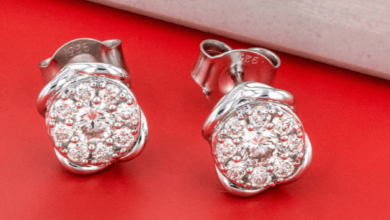How does a leaking radiator create persistent moisture issues in your living space?

Imagine coming home after a long day and noticing damp patches on your walls or that musty smell in the air. That’s often the hidden handiwork of a leaking radiator. Even small drips, if left unchecked, can feed constant moisture into your floors and walls.This steady water flow creates the perfect environment for condensation, invisible mold growth, and even wood rot behind radiators and under floorboards. It also encourages secondary problems such as peeling paint, swollen doorframes, and damaged insulation material.Over time, all these moisture problems from your leaking radiator can really mess up your indoor air quality, threaten your home’s structure, and hike up your energy bills. Watching for early clues and fixing radiator leaks fast is key to keeping your living space healthy, safe, and dry.
Understanding the origin: What is a leaking radiator and why does it matter?
A leaking radiator may sound like a minor nuisance, but in your living space, it can kick off a never-ending cycle of moisture problems. Radiators are essential elements in central heating systems, installed in millions of Dutch and Belgian households, including those using water-based systems from brands such as Vaillant, Remeha, or Ferroli. A small crack or corrosion spot, whether in the radiator panel, valve, or pipe attachment point, allows water to escape. Although it may seem insignificant, this continuous leak can cause unexpected long-term damage.When moisture escapes, it creates a persistently damp microclimate in your rooms—think of wet patches under windowsills, bubbling paint, mold formation, and a general musty smell. According to Prof. John Straube, a renowned building science expert at the University of Waterloo, this chronic dampness is often misdiagnosed, with the underlying radiator leak overlooked. That’s where you need to look deeper into the symptoms, preferably with a professional like us at Ultrices Lekdetectie.
The science behind persistent moisture: How does a leaking radiator disrupt your living environment?
Moisture issues start when escaping hot water seeps into walls, flooring, or subfloors. Capillary action can move this water throughout material structures, explained by the physical process outlined by the International Institute of Building Enclosure Consultants (IIBEC). Over time, this seepage breaks down wall insulations (like mineral wool or PUR foam). As humidity traps itself, it increases the dew point on interior surfaces, which promotes condensation—even after the initial leak stops.Microbial growth, such as mold colonies (Stachybotrys chartarum and Aspergillus niger), thrive in these damp zones. The World Health Organization emphasizes that long-term exposure can trigger respiratory disorders, eczema, and allergy flare-ups. Persistent moisture can even affect indoor air quality, evidenced by sensors like those from Netatmo or Awair, which register higher particle counts and humidity where leaks occur.
Key warning signs: Identifying ongoing moisture issues from a radiator leak
You might spot a host of issues, but not always the source. Persistent symptoms may include more than just a puddle; the damage goes far beyond what’s visible. Here’s how to recognize the red flags:
- Stubborn damp patches: These form under radiators, along skirting boards, or sometimes even distant walls, as water migrates through masonry and subflooring.
- Bubbling paint and peeling wallpaper: Moisture trapped behind surfaces breaks down adhesive bonds, causing physical deformation.
- Mold growth and earthy odors: Hidden leaks provide perfect habitats for mold, often discovered by the nose before the eye notices.
- Rising heating bills: Water loss makes your boiler work overtime to keep up, as noted by the Netherlands Organisation for Applied Scientific Research (TNO).
- Warped floors or lifted tiles: absorbed water causes wood to swell or tile adhesive to fail, commonly spotted near bathroom or kitchen radiators.
Leak detection techniques: No-hack moisture solutions for radiator leaks
Modern leak detection employs advanced technology—no unnecessary damage, no guesswork. At Ultrices Lekdetectie, we apply a mix of the most effective techniques, all recognized throughout the Dutch and Belgian building maintenance sector.
- Thermal imaging cameras (FLIR, Testo): These visualize temperature anomalies behind walls or underneath floors, pinpointing hidden leak paths.
- Acoustic sensors: Sensitive microphones pick up the subtle sounds of dripping or running water, which are not always perceptible to human hearing.
- Tracer gas testing: We inject non-toxic, odorless gas into the system and detect leak locations with specialized sensors from Sewerin or Ridgid.
- Moisture meters (Protimeter, Trotec): These devices accurately map out moisture gradients across walls, ceilings, and floors, highlighting the scope of hidden damage.
- Endoscopic inspections: Small fiber-optic cameras let us look into enclosed spaces, confirming source and extent without any demolition.
Our no cure no pay approach eliminates unnecessary costs: if we don’t pinpoint the cause, you don’t pay. Want to discover how our proven approach saves you money and keeps your home healthy? Lees meer over lekdetectie voor een vast tarief in Nederland.
The long-term impacts: What damage does persistent radiator moisture cause?
Allowing a radiator leak to persist leads to more than cosmetic flaws. According to a study by Technische Universiteit Delft, cumulative water infiltration can alter foundational concrete, rust steel reinforcements, and compromise wooden structures—drastically affecting a building’s value and safety. Damage increases exponentially when combined with seasonal freeze-thaw cycles, a well-documented phenomenon in Northern Europe. Notably, insurance companies like Interpolis and Achmea note that unresolved leaks often result in denied claims due to negligence.Persistent moisture means:
- Loss of insulation performance: Drenched insulation loses up to 60% of its effectiveness, causing energy bills to spike.
- Accelerated rot and decay: Regular moisture contact with timber leads to dry rot (Serpula lacrymans), weakening structural integrity.
- Electrical hazards: Dampness can cause corrosion at wiring junctions, risking shorts, as outlined by NEN 1010 (Dutch electrical code).
- Unpleasant sales prospects: Moisture and mold issues dramatically decrease your property’s market desirability.
- Chronic health complaints: Prolonged exposure to damp and spores correlates with asthma and bronchitis, verified by RIVM studies (the Dutch National Institute for Public Health and the Environment).
Prevention and mitigation: How to address and avoid moisture issues from a leaking radiator
Effective mitigation starts with early detection. At Ultrices Lekdetectie, we combine industry best practices with tools like the FLIR E-series thermal camera and Protimeter MMS2 to quickly and non-invasively identify leaks. Prompt repair prevents escalation.Best practices for keeping your home dry:
- Regular system checks: Annual maintenance by a certified installer ensures your radiator valves and pipes remain leak-free.
- Proactive leak detection: Periodic scans with moisture meters or thermal imaging, especially after noticing any warning signs.
- Immediate repairs: Swiftly replace corroded or malfunctioning parts—delaying repair amplifies cost and complexity.
- Enhanced ventilation: Maintain correct humidity levels (40%-60%) with smart humidistats (Netatmo, Tado).
- Professional support: If you’re in doubt, trust our VCA-certified experts for a full expertise report delivered within 3 working days.
Let us help solve any leak-related headaches—check our services for fixing waterlekkages zonder hak- en breekwerk and discover how you can keep your family and investment safe: Ontdek radiator lekkage opsporen diensten in Nederland.
Conclusion: Why Ultrices Lekdetectie is your partner against radiators leaks and moisture problems
Understanding how a leaking radiator creates persistent moisture issues is the first step to regaining control over your living environment. Our unique no cure no pay principle lets you benefit from proven expertise with zero risk, always for a fixed fee. We’ve helped countless households across the Netherlands and Belgium banish moisture, restore comfort, and protect property values without destructive methods. Equip yourself with professional support, early detection, and a science-based approach—choose the partner that delivers results, every time.
FAQ
1. How does a leaking radiator lead to persistent damp issues in your home?
When your radiator leaks, even a slow drip can create a continuous source of moisture. Over time, this water seeps into walls, floors, or under carpets, leading to damp patches that never dry out. This isn’t just an inconvenience; trapped moisture from leaks fuels mold growth and encourages wood rot, especially in hidden spaces. At Ultrices Lekdetectie, we’ve seen many homes where a “little leak” became a big, expensive headache!
2. What are the main signs that a radiator leak is causing ongoing moisture problems?
You’ll likely notice musty smells, peeling paint, or walls feeling colder and damper than usual. Sometimes, warped flooring or mysterious stains start appearing far from the actual radiator. Clients often call us at Ultrices Lekdetectie when they can’t explain where the dampness is coming from—only for us to find a sneaky radiator drip behind the scenes.
3. Can a small radiator leak really affect your indoor air quality?
Absolutely. Persistent moisture from even a tiny radiator leak provides the perfect habitat for mold spores and dust mites. This impacts your air quality, causing symptoms like coughing, allergies, and respiratory discomfort. It’s not uncommon for families to feel unwell for months before uncovering the real culprit—a hidden radiator leak.
4. What structural damage can happen if a leaking radiator is left unattended?
Ignoring a leaking radiator is risky business. Water travels along the path of least resistance, damaging skirting boards, plaster, and even the subfloor. Over time, this weakens your walls and floors. At Ultrices Lekdetectie, we’ve seen cases where leaking radiators went unnoticed for so long that entire floor sections needed replacing.
5. Why is professional leak detection important to fix persistent moisture from radiators?
DIY fixes rarely solve the deeper problem—you might stop the drip, but the hidden moisture often lingers on. Professional leak detection, like the no cure no pay approach at Ultrices Lekdetectie, pinpoints not just the leak, but how far the moisture has spread. This ensures full repair and a dry, healthy home.





